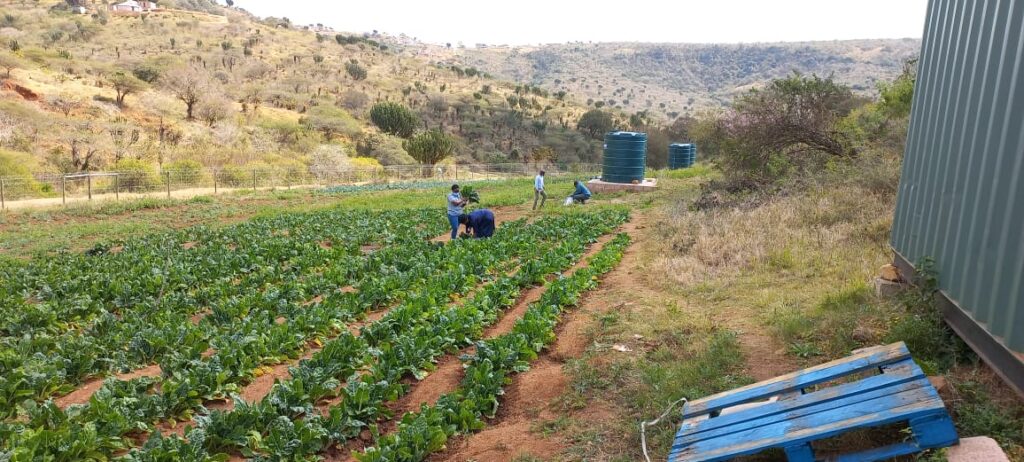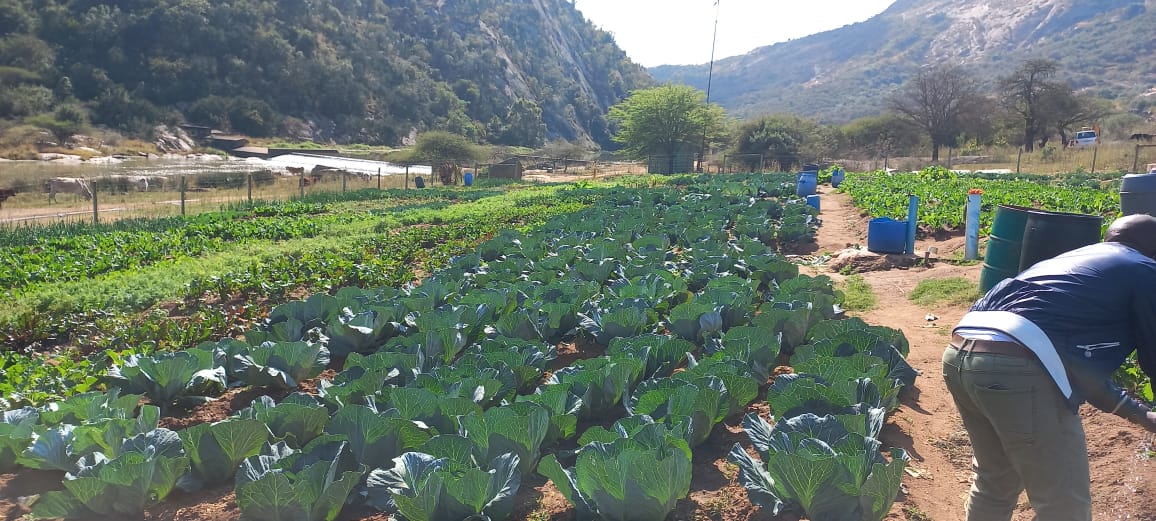‘Until you dig a hole, plant a tree, water it and make it survive, you haven’t done a thing. You are just talking…It’s the little things citizens do. That’s what will make the difference. My little thing is planting trees.’ – Wangari Maathai.
In South Africa, where food and nutrition security remain a pressing issue, trees continue to be a beautiful and fruitful ally in the fight against hunger. These long-lived giants are proving to be vital components of a sustainable solution to food insecurity and livelihoods. Their role extends beyond providing shade and beauty; trees are crucial in enhancing food provision landscapes, improving soil health, and supporting the resilience necessary for a community to thrive.And they are a critical part of the WWF Nedbank Green Trust-funded Woza Nami Phase II project.


‘Woza Nami Phase II consolidates and expands 4 years of relationship building with 135 smallholder farmer households – 80% women – in partnership with the eThekwini municipality.In this next phase, the participation of the Institute of Natural Resources (INR) enables us to expand beyond agroecological farming skills and scaling of production to further improve the social-ecological resilience of the food production landscape through agroforestry,’ said Tatjana von Bormann, codirector and current advisory board chair of the Southern Africa Food Lab.
‘The introduction of indigenous trees strengthens the structural and functional capacity of local farms by providing fencing, shade, water and windbreaks to other crops, as well as livelihood opportunities from fibre, fodder and medicine derived from these trees. The focus is on deepening farmer and community resilience through productive and diverse farming, which translates into rich and diverse local diets.’
The link between trees and food security
- Nutrient-rich food sources: Trees are an essential source of diverse and nutrient-rich foods. Fruit-bearing trees like mangoes, avocados and guavas offer vital vitamins and minerals, helping to combat malnutrition. Indigenous tree species such as the marula and baobab are not only culturally significant, but also provide essential nutrients that are often lacking in diets reliant on staple crops.
- Improving soil health: One of the most critical aspects of food production is soil health. Trees contribute significantly to soil fertility through a process known as agroforestry. Their roots help prevent soil erosion, enhance soil structure, and improve water infiltration. Additionally, trees can fix nitrogen (a crucial nutrient for plant growth)in soil,reducing the need for synthetic fertilisers and improving crop yields.
- Water management: In South Africa, where water scarcity is a significant concern, trees play a crucial role in managing and conserving water resources. Their root systems help maintain soil moisture levels, reduce runoff, and promote groundwater recharge. By stabilising the soil and minimising erosion, trees contribute to more sustainable water use in agricultural practices.
- Climate resilience: Trees act as natural climate regulators. They absorb carbon dioxide, a major greenhouse gas, and help mitigate the effects of climate change. In regions prone to extreme weather events like droughts and floods, trees can provide essential protection for crops and reduce the vulnerability of farming communities.
- Economic benefits and livelihoods: The cultivation and management of trees can provide economic opportunities for local communities. In addition to fruit and nut production, trees can be sources of timber, fuelwood, and medicinal products. The income generated from these resources can support local economies and improve the livelihoods of those engaged in tree-related activities.
‘Woza Nami Phase II aims to enhance the agroecological infrastructure of the eThekwini municipality through a multifaceted approach. This includes planting indigenous trees and crop saplings, alongside training in plant care, cropping and harvesting using agroecological practices. The initiative also covers plant propagation, post-harvest processingand establishing market linkages’, continued Von Bormann.
Mallika Sardeshpande, Senior Scientist at INR and Honorary Fellow at the University of KwaZulu-Natal, explains that key activities will involve researching, monitoring, and evaluating ecological infrastructure and governance. Additionally, the project will include quarterly assessments of the growth, quality and yield of indigenous trees and crops to evaluate their impact on food security, nutrition, livelihoods, and landscape value, as well as periodic reviews of the socioeconomic benefits of the project hubs to the community.
Furthermore, Woza Nami Phase II is dedicated to enhancing farmer resilience through several key strategies:
- Participatory design: Involving farmers in the planning process to ensure a gender-sensitive approach that respects local knowledge systems, language nuances, community structures, and networks.
- Focused nutrition support: Shifting the focus from broader community nutrition to fostering direct relationships with extended farmer households and early childhood development services (ECDs).
- Agroecological farming support: Advancing farming skills and scaling production by providing indigenous tree seedlings, fodder, animal husbandry resources, and non-timber forest products like fibre, fruit and medicine.
- Circular economy emphasis: Promoting a circular economy through strategic input supply and market development, supported by selected enterprising farmers.
Conclusion
In the ongoing battle against hunger in South Africa, trees are emerging as powerful allies. Their multifaceted contributions, ranging from providing nutritious food and enhancing soil health to supporting water management and economic development, underscore their importance in building a more resilient and sustainable food system. By recognising and harnessing the potential of trees, South Africa can take significant strides towards achieving food security and fostering a healthier, more sustainable future for all its citizens.



